 In the ever-evolving solar energy industry, effective marketing plays a pivotal role in attracting customers and establishing a brand's credibility. Harnessing the sun's renewable power is not only an eco-conscious choice but also a smart economic decision. However, conveying the benefits and complexities of solar technology to potential clients requires a deft touch. That's where an experienced solar energy writer comes into play. Effective solar marketing campaigns rely on engaging stakeholders within the target market. Yet, many marketing firms and PR agencies lack the renewable energy industry knowledge to realize this. Let's examine five compelling reasons why hiring an experienced solar energy writer for marketing materials is crucial for numerous businesses in the solar energy industry. By Sarah Lozanova, Clean Energy WriterDespite setbacks from the pandemic, renewable energy deployment is increasing. The Inflation Reduction Act extends renewable energy tax credits and helps remove barriers for low-income households to use clean energy. Although supply chain shortages have created hurdles across the energy industry, 2023 has the potential to be a promising year for the transition to clean energy. Let’s examine the forces at play for renewables in 2023. High Fossil Fuel Costs Make Renewable Energy More Cost-EffectiveThe price of oil, natural gas, and coal has been rising, and quite erratic, partly due to the Russian invasion of Ukraine. A natural gas shortage has temporarily spiked interest in coal, causing prices to soar last March and then rise and dip repeatedly since. Although some markets are using more coal during natural gas shortages, a return to coal power is counterproductive for mitigating the climate crisis.
By Sarah Lozanova, Solar Energy Copywriter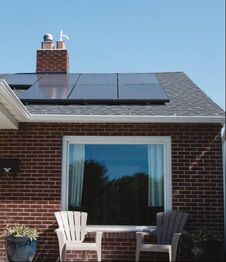 Even though the cost of going solar has plummeted in recent years, it still requires a significant upfront investment. A residential solar energy system often costs $16,000 – $25,000 or more. Fortunately for qualified homeowners, the solar tax credit can reduce the total cost by more than $4,000 or $5,000 for systems in this price range. In addition, the solar incentive significantly boosts the return on investment while reducing the payback period. Let’s explore how the solar tax credit works, who is eligible, and how to take advantage of it. What Is A Tax Credit? A tax credit is a dollar-for-dollar reduction in taxes owed to the federal government. Therefore, a $5,000 tax credit reduces income taxes to the IRS by $5,000. However, a tax credit has no value to the taxpayer if they have no tax liability. By contrast, a write-off or a tax deduction reduces total taxable income rather than the tax liability by the given amount. Unlike a tax credit, the value of a write-off depends on your tax rate. Therefore, tax credits are more valuable to the taxpayer than a write-off of the same amount. By Sarah Lozanova, Solar Energy Writer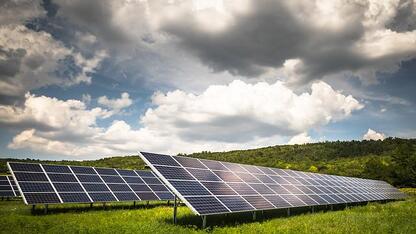 Many states have seen rapid growth of community solar energy projects. By eliminating many traditional barriers to using renewable energy, these solar farms enable a larger segment of the population to take advantage of solar energy, including low to moderate-income households, renters, condominium owners, and homeowners with shaded roofs. There were 4.9 gigawatts of community solar installations in the United States, enough to power about 3.7 million homes, as of the writing of this article. Community solar projects give members many of the benefits of solar energy without having an on-site rooftop solar system. A given community solar farm generates renewable energy for hundreds or even thousands of homes, organizations, and small businesses. Households and companies join a community solar project by subscribing to a portion of the solar farm’s monthly output. Typically, there is no fee for joining or canceling, and you must give around 60 or 90 days’ notice to terminate. By Sarah Lozanova, Solar Writer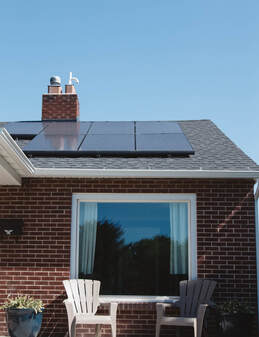 Solar energy installations have skyrocketed in recent years; it’s likely there are some in your neighborhood. One of the reasons solar power has become so popular is the cost of solar systems has plummeted in the last decade or two. As a result, many more households can afford to install solar. But just how much will a solar system cost? Many homeowners want to get a sense of the cost before having a solar company inspect their property or giving away their personal information online. Ballpark Solar System Cost According to Energy Sage, the average solar system costs about $2.77 per watt installed. This price covers labor, permitting, solar panels, the inverter, and other solar equipment, but prices may vary by the installer, solar panel location, and equipment. The size of your solar energy system will be determined by your total electricity usage, available space for installing solar panels, and budget. To determine how much electricity you use, review your electric bills for the past year or more. The average home needs about a 6 kilowatt (kW) solar system, which costs roughly $17,000 before incentives. If you can take advantage of the federal solar tax credit in 2022, you can receive a tax credit for 26% of the total system cost. If you install your system in 2023, then the solar tax credit is 22% of the total cost. Speak with a tax expert to ensure you can take advantage of the tax credit. By Sarah Lozanova, Solar Marketing Writer California leads the way in photovoltaic installations with over 32 MW of installed capacity, enough to power 9.6 million homes. The Golden State is serious about transitioning to renewable energy to phase out fossil fuel consumption and reduce carbon emissions. In fact, the Golden State has numerous laws to make this happen, enabling unprecedented growth in the solar energy industry. Because California has many building codes regarding solar energy, PV contracts need to be aware of these when conducting business in the state. Being knowledgeable about how these laws impact energy codes is critical for advising clients. What Is The California Solar Mandate? In 2018, California created a mandate that new single-family homes and multi-family dwellings up to three stories high must install solar panels. The California solar mandate took effect on January 1, 2020, and is part of California’s building codes. The mandate was created by the California Energy Commission (CEC), was unanimously approved 5 to 0 and is the first such mandate in the United States. By Sarah Lozanova, Solar Writer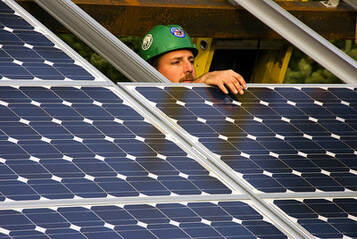 Despite the COVID-19 pandemic, the solar energy industry has been remarkably resilient. Rapid technology improvements, government incentives for solar panels, and the increasing competitiveness of solar energy storage batteries have helped boost clean energy deployment. Although 2022 does seem like a very promising year for solar energy installations, there are some potential hurdles along the way. So, what should you expect for 2022, and how can you prepare? Identifying upcoming trends can help your company be adaptive to the changing business climate in 2022 and beyond. Solar Technology Will Continue To Improve Solar panels continue to become more efficient, enabling homes and businesses to produce more electricity in a limited space. Increasingly, solar PV panels are lighter weight, have a sleeker appearance and thinner profile, making them more visually appealing. In addition, solar shingles are becoming more widespread, and there are more available products than ever before. Despite these improvements, solar energy costs seem to be remaining relatively stable. By Sarah Lozanova, Solar Energy Copywriter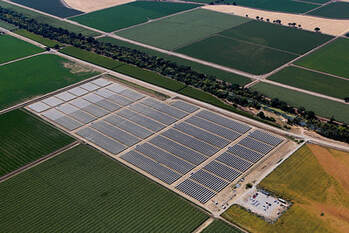 As solar energy deployment increases, solar farms are becoming bigger than ever before. Large-scale solar farms have ground-mounted solar panels. Therefore, the way developers plan and manage those impacts wildlife and local ecosystems. How can solar professionals minimize the ecological impacts of solar farms? It is essential to examine this question throughout all phases of solar farm development, from the initial planning phase to decommissioning. Alternatives to Mowing It is critical to minimize or eliminate shading on solar panels to boost electricity production. Therefore, many solar farm managers mow around the solar panels with gas-powered mowers and use herbicides. Unfortunately, these produce carbon emissions, burn fossil fuels, and contaminate air quality and water quality. Using sheep to graze around the solar panels reduces or eliminates the need to mow and apply herbicides. Sheep are excellent at removing vegetation, even between solar panels. This prevents shading without chemicals or gas-powered equipment. 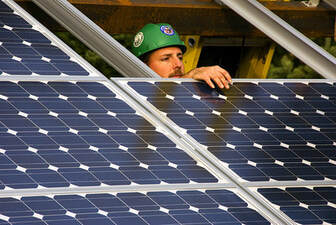 By Sarah Lozanova, Solar Writer The United States now has enough installed solar energy capacity to power 17.7 million homes. Although this is fantastic for air quality and greenhouse gas emissions, it means there is a looming e-waste issue on the horizon. At some point, the photovoltaic panels will no longer generate enough energy. Is it possible to recycle solar panels when they have reached their end of life? The design life of solar panels is 25 to 30 years. Over time, solar modules become less efficient in converting sunlight to electricity due to degradation. Most of the solar panels in the U.S. were installed in the last decade. The efficiency of the panels will decrease and need to be replaced. Broken solar panels are good candidates for a refurbishing program. Currently, only a small fraction of solar panels are recycled. The lack of governmental policies, infrastructure, and foresight in the module design process makes solar panel recycling expensive and arduous. For solar energy to truly produce clean energy, we must recycle solar panels effectively. What materials are in solar panels? When exploring recyclability, it is helpful to consider the components that make up a solar photovoltaic (PV) panel. Silicon-based modules are comprised of glass, plastic, aluminum, and silicon. Unfortunately, they also contain trace toxic compounds, such as lead, which can leach into groundwater if not properly disposed of. Cadmium telluride (CdTe) is found in thin-film solar and is toxic and a carcinogen. Because thin-film currently constitutes less than 5% of the global module market, it is a smaller-scale concern. 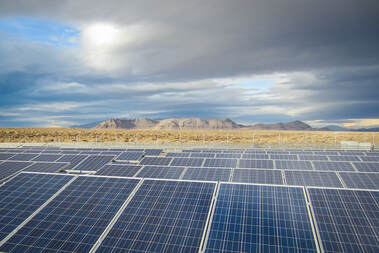 By Sarah Lozanova, Solar PV Writer U.S. solar generation capacity is soaring. Construction began recently on the Samson Solar Energy Center, the largest planned solar energy farm in the United States. When completed, the solar farm will have 1,013 megawatts of generating capacity. This solar farm will be considerably larger than the 690 MW Gemini solar project with battery storage under construction outside of Las Vegas, which had been the largest project in the U.S. Invenergy is developing the Samson solar farm, which will span three counties in Northeast Texas near the Oklahoma border. The project will create an estimated 600 construction jobs and $450 million in tax revenue and landowner lease payments. Developers are planning construction in five phases, with a 2023 expected completion date. Texas is a leader in renewable energy production in the U.S. due to its excellent solar and wind energy resources. It leads in the nation in installed wind energy capacity and trails California for installed solar energy capacity. 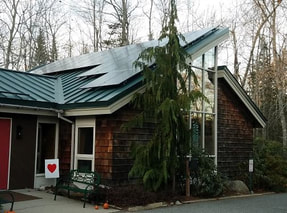 By Sarah Lozanova, Solar Energy Writer Many homeowners want to install a solar electric system but don’t know if their roof gets enough sunshine. The return on investment from the solar panels and the positive environmental benefits are highly dependent on the energy production. Here’s the essential information to determine if a house has ample solar potential. Roof Orientation Solar energy systems generate the most electricity when the panels are pointed south. If the orientation of the roof is slightly off from due south, it won’t have a dramatic impact on the total energy production. If the solar panels face east, they will generate more energy in the morning. Conversely, if the panels face west, the system will have excellent afternoon production but little in the morning. It is not recommended to install panels on a north-facing roof (in the northern hemisphere). 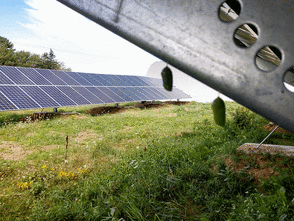 By Sarah Lozanova, Solar Energy Writer A big concern with large-scale solar farms is the impact on land use. Solar developers often site projects on agricultural land that is taken out of production. Also, the vegetation around solar panels needs to be maintained to prevent shading. In some cases, herbicides are used, contaminating waterways, and mowing generates pollution. If the developer applies gravel or plants turfgrass, the land has little wildlife value. As the local food movement gains steam, isn’t it counterproductive to turn productive cropland into an energy plant? How can the solar energy industry embrace biodiversity while producing clean energy? Is dual use of a solar site possible? Solar farms can be managed to increase pollinator habitat, improve soil quality, and even for livestock grazing. Innovative land management approaches enable solar projects to serve multiple purposes, benefitting the local economy. Keeping honeybees, grazing sheep, and even cultivating mushrooms can all complement a solar energy project. Native Wildflowers Boost Pollinator Habitat Researchers with the Argonne National Laboratory are examining the economic benefits of establishing native vegetation, including wildflowers and prairie grasses, on nearby cropland. Native vegetation attracts crucial critters like bees, flies, bats, birds, wasps, moths, and butterflies, which can be beneficial to crop yields. Researchers with the Argonne National Laboratory are examining the economic benefits of establishing native vegetation on nearby cropland, including wildflowers and prairie grasses. A diverse array of native plants benefits wildlife diversity, especially pollinators. These crucial critters include bees, flies, bats, birds, wasps, moths, and butterflies, and can be beneficial to crop yields. Read More... Image Credit: Danny Piper of Sundog Solar 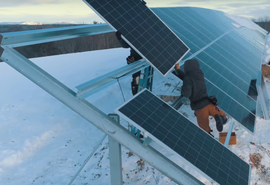 By Sarah Lozanova, Solar PV Writer There is now enough installed solar energy capacity in the U.S. to power 13.5 million homes, and this amount is expected to double in the next five years. The solar energy industry is part of a very dynamic market. Many factors — including government policies, fossil fuel costs, solar energy technology advances, commodity prices, and even public awareness of the climate crisis — impact solar energy deployment across the globe. What’s in store for the year ahead? Let’s explore some trends in solar energy to better understand what is on tap for 2020. Solar Battery Prices Are Falling Solar energy is an intermittent energy source. This means that solar panels produce power when the sun is shining and not when it isn’t. Energy storage allows the solar system to supply power when the sun has set or in cloudy weather, expanding the capabilities of solar energy systems. There are two main types of solar batteries: lead-acid batteries (like you have in your car) and lithium-ion batteries. The latter is far more advanced, longer-lasting, and requires less maintenance. Not surprising, lithium-ion batteries have a higher upfront cost, but the price has been decreasing significantly in recent years. The cost of lithium-ion battery storage fell 35 percent from the first half of 2018 to now (December 2019) and 76 percent since 2012. This downward price trend is good news for renewable solar energy in 2020 — and it’s likely to continue. Natural gas plants are often used to meet peak energy loads because they can more easily be turned on and off than coal or nuclear power plants. Lower costs make it easier for intermittent renewable energy sources — such as wind and solar — to be cost-competitive with dispatchable fossil-fired power plants. Price decreases in utility-scale battery banks now make solar plus energy storage competitive in many areas on price alone. Battery banks can make it unnecessary to fire up power plants during times of peak demand, reducing fossil fuel consumption. The greater the capabilities of solar, the less attractive and financially viable these peaker power plants become. On the residential side, more homeowners are relying on solar systems with battery storage for emergency power during grid outages than ever before. This is an especially attractive option in areas prone to extended power outages due to natural disasters or with inadequate utility infrastructure, like Puerto Rico. Read More... Image Credit: Sundog Solar Trends in Solar Energy - Clean Energy Writer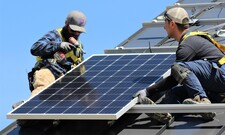 By Sarah Lozanova, Solar PV Writer The solar energy industry is booming across the United States and beyond. As jobs in the coal industry slump, careers in solar energy are taking off. In the U.S., 855,000 people were employed in the renewable energy industry either directly or indirectly in 2018. Over 240,000 of these people work in the solar energy industry, and this number is growing quickly. The U.S. trails China and Japan in solar energy jobs, with China employing 2.2 million or 61 percent of the global total. Although solar jobs exist across the U.S., California, Florida, Massachusetts, New York, and Texas lead the way in solar industry jobs. To learn about the breakdown of solar jobs by location and sector, visit the Solar Job Census map. Reports for individual states highlight how many jobs exist in installation, manufacturing, distribution, and operations and maintenance. In most states, installation jobs lead the sector in total jobs. If you are interested in entering the solar energy field, there are a variety of different careers available. Like any other industry, the solar energy industry needs dedicated professionals to help it thrive. Let’s look at some of the career options in solar energy. Solar System Installer Solar installers put solar panels on the roof and connect them to the electric panel. This job requires some training, which you can often get on the job, and general construction and electrical experience are helpful. Installation classes and training programs are available through solar manufacturers, solar organizations, or programs at community colleges and trade schools. Obtaining NABCEP certification could also help your career advancement as it the most recognized certification in the solar energy industry. Read More... Image Credit: Sundog Solar Careers in Solar Energy - Freelance Copywriter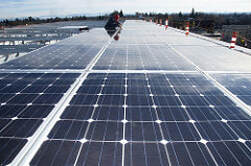 By Sarah Lozanova, Solar Writer Across the globe, corporations are helping to fuel the clean energy movement and are using solar energy to power their operations, providing consumers a choice to support solar when shopping. Large U.S. corporations installed 326 megawatts of solar panels in 2017, and now more than 4,000 U.S. companies have installed solar energy systems, according to the Solar Energy Industries Association. Corporate investment in renewable energy is boosting solar energy deployment as companies work towards sustainability goals and cut operating expenses. As the cost of solar energy falls, solar has become a cost-effective source of new power generation. Many of the solar-powered corporations consist of retailers and IT companies. Let’s examine some of the retailers that are leading the way in solar energy installations. 1. Target With more than 200 megawatts of total solar energy capacity or enough electricity to power 33,000 homes, Target is the leading retailer for solar energy capacity, and it installed a whopping 40 megawatts of capacity last year. With over 1,800 stores total, Target has a goal to have solar panels on 500 stores and distribution centers by 2020, and it is well on its way with 422 solar systems. In addition, Target has solar systems with battery storage at six locations in Hawaii. Read More... |
